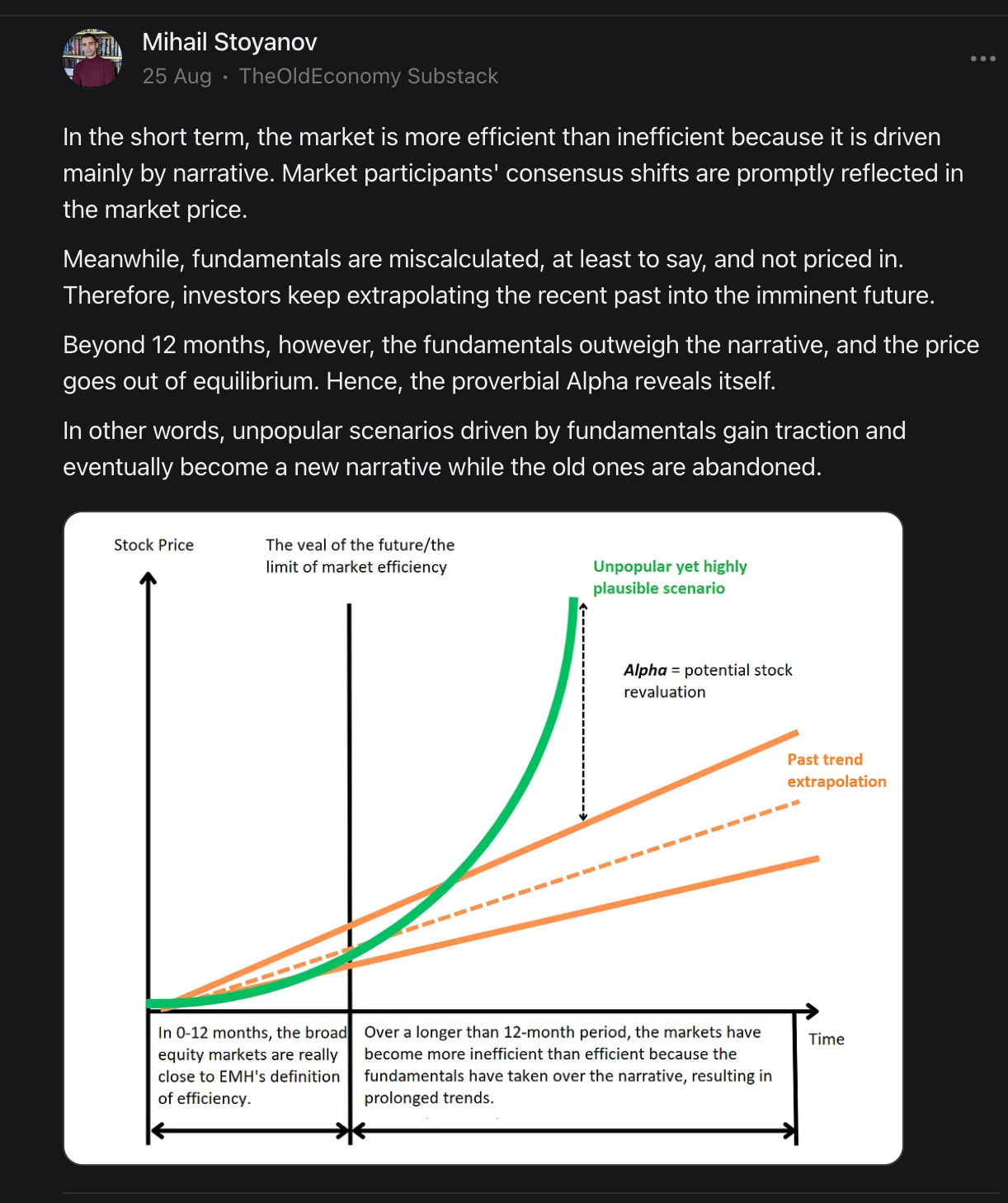Ferg's Finds
This is a short weekly email that covers a few things I’ve found interesting during the week.
Article
I've touched on this a few times: not only are we seeing polarisation between East and West, but polarisation within Europe. VW is now being forced to close factories in Germany and France, while Chinese EV manufacturers have been rewarding Hungary and Poland that didn't sacrifice their grid on the green altar.
Podcast/Video
Enjoyed this H/T to Vianney for sending me it: The Skills of Stock Picking by Ian Cassel
Quote(s)
“There are three legal investment strategies: You can be smarter than others. You can be luckier than others. Or you can be more patient than others. Know your edge and how hard it is to maintain.”
- Morgan Housel
Tweet/Notes
Mihail has been putting out some great notes and write-ups.
Charts
Coal generation forecasts are always “about to roll over next year” only for reality in Asia to run over them.
Something I'm Pondering
I'm pondering how poorly understood the synthetic production of commodities is (myself included).
I recently mentioned sodium ion batteries and pointed out two thirds of soda ash production is synthetic and produced in China. It's produced via the Solvay process which involves salt, limestone, and thermal energy (in the form of ammonia produced via coal).
This brings me to something I just learned 78% of battery making graphite (BAM) is synthetic.
I previously thought headlines (China Tightens Export Controls on Battery-Making Graphite) were based on China controlling natural graphite supply (which they also do… but it’s only 14%).
Today, about 14% of the global BAM feedstock is natural graphite, and 78% is synthetic. However, by 2025, accelerated by increased demand and the ability to ramp up synthetic production quicker and more efficiently than natural production, synthetic graphite’s market share is expected to reach 87%.
This is an issue for the West, with each EV needing 50-100 kg of graphite in its battery pack for the anodes, the negative electrodes of a battery.
How is synthetic BAM made?
By heating petroleum coke or coal tar at 2500°C in an electric furnace.
For synthetic graphite anodes, the starting material is petroleum coke or coal tar pitch, byproducts of the oil and coal industries.
To convert coke or pitch into synthetic graphite requires the material to undergo an energy intensive graphitisation process. Inner Mongolia in China is home to many graphitisation facilities but the region uses coal for much of its electricity generation. This results in the average synthetic graphite anode material having a carbon intensity over three times that of the average natural graphite anode material produced in China.
Despite these environmental concerns, the cost competitiveness and scale of China’s anode industry means the global market has a major obstacle to overcome in reducing its dependence on China, which stands as high as 99% in some parts of the supply chain.
In other words China’s below monopoly in graphite is based on abundant energy and lack of environment concerns (the same can be said for rare earths toxic extraction).
I hope you’re all having a great week.
Cheers,
Ferg
P.S. If you’re interested in my story and why I started this Substack, you can read the story here.










The field of commodities is incredibly intricate and deeply interconnected, leaving me both fascinated and overwhelmed by its complexity. I recently enjoyed reading Ed Conway's *Material World*, which provided some valuable insights. Yet, the more I learn, the more I realize how much I still don't understand—and probably never will.
There are certain bottlenecks where a single company supplies all the essential material globally. Without it, entire industries would come to a standstill. It's truly mind-boggling.
Below you find an interview of Ed Conway.
https://www.youtube.com/watch?v=4C2-tWcFKfQ&t=148s
FEG I'm speechless, this outstanding research says it all. This desire for a green world is the most dangerous thing for the environment. It seems that society continues to find more inefficient ways of using resources it claims are dangerous, to make it feel better about relationship with the environment. I'm off to increases my coal positions, thanks for the continued outstanding content!!